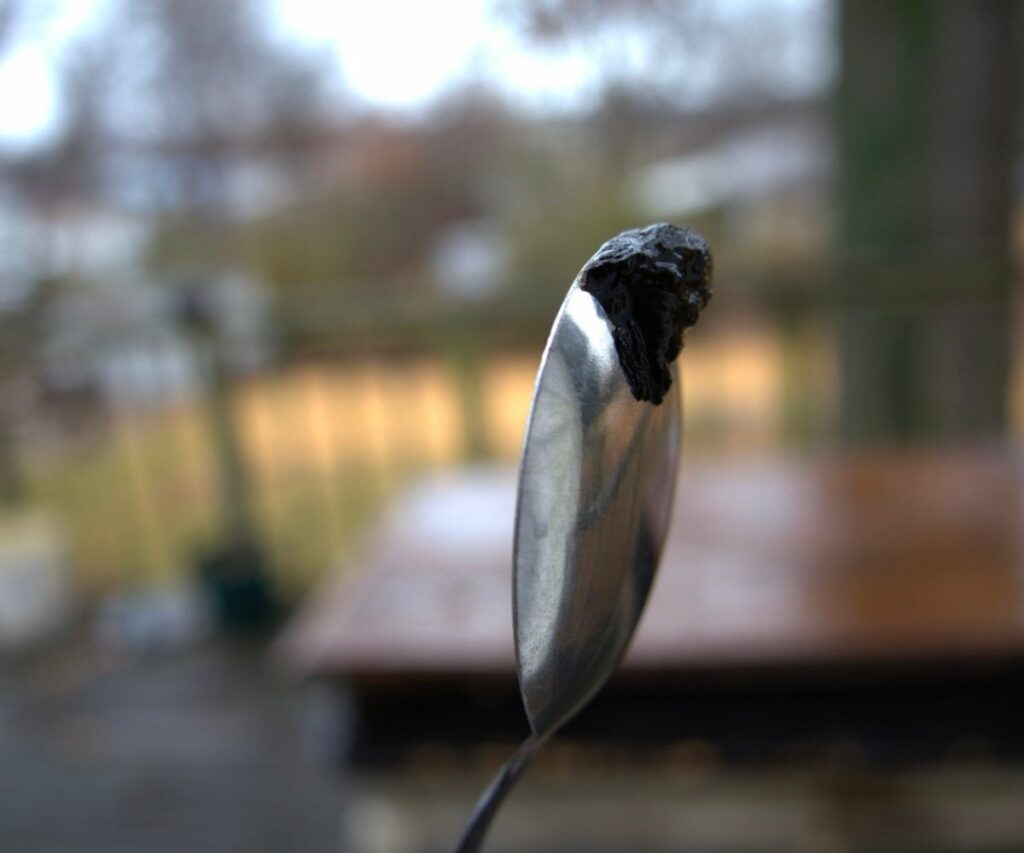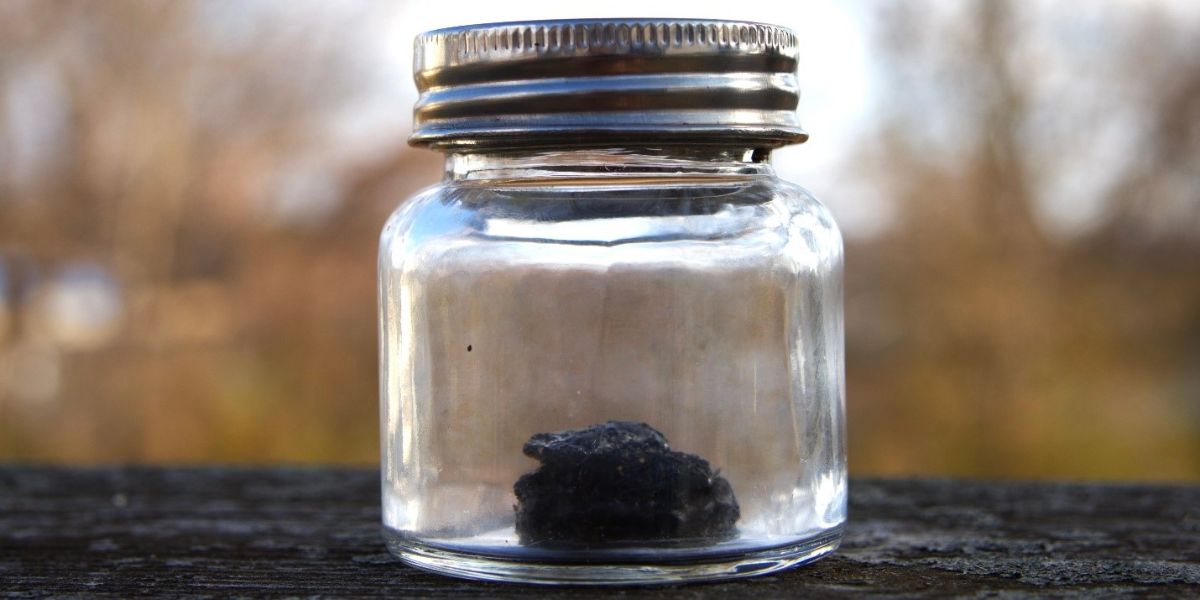Wild lettuce is a potent natural painkiller that could be growing right in your backyard.
Its analgesic and sedative properties provide the perfect base to craft highly effective teas, tinctures, and capsules. However, wild lettuce must be processed correctly to obtain optimal results.
Making a wild lettuce extract is the first step.
The extraction process breaks down the plant’s cell walls, making its valuable compounds available. It substantially enhances the effects of wild lettuce, producing one of the world’s most powerful non-narcotic pain relievers.
Materials to Make Wild Lettuce Extract
Making a wild lettuce extract is time-consuming and requires both water and alcohol to draw out different compounds.
This process, called dual extraction, demands a fair bit of legwork and patience, but the myriad medicinal properties and various applications of wild lettuce make it well worth the effort.
The following items are what you’ll need to get started:
- Wild lettuce: Make sure you source real wild lettuce. Choose Lactuca virosa for the most powerful painkilling results. If this variety is unavailable, Lactuca serriola or Lactuca canadensis will also work. Collect at least three whole plants for the extract.
- High-proof alcohol: Use the highest-proof grain alcohol or vodka available in your area. I use 190-proof Everclear, but an 80-proof will work if necessary. Avoid whiskey, rum, or flavored alcohol.
- Blender: While a blender will make it much easier to macerate the wild lettuce, it isn’t strictly necessary. If you don’t have one, use the alternative method explained in step three.
- Mason jar: The mason jar will hold your lettuce mash for part of the extraction.
- Water: You must perform a water decoction as part of the extraction process. Your tap or well water will work fine.
- Strainer: Use a fine culinary strainer or cheesecloth to separate the macerated plants from the liquid. I use a Toncoo small-particle strainer, which helps move the process along quickly while keeping everything clean.
- Slow cooker: Performing the initial stage of the water decoction in a slow cooker will reduce much of the hands-on work. You can use your stove pot for the entire decoction if you don’t have one.
- Stove pot: You will need a pot to reduce the decocted liquid on the stove. Choose one with a wide mouth for a more even heat distribution.
- Dehydrator: Since the extract will be pretty wet when you begin, you’ll need a dehydrator with an insert for drying liquids, like my much-adored Nesco Snackmaster. A dehydrator will improve the extract’s quality, but it isn’t essential. Learn about alternative drying methods in step eight.
How to Make Wild Lettuce Extract
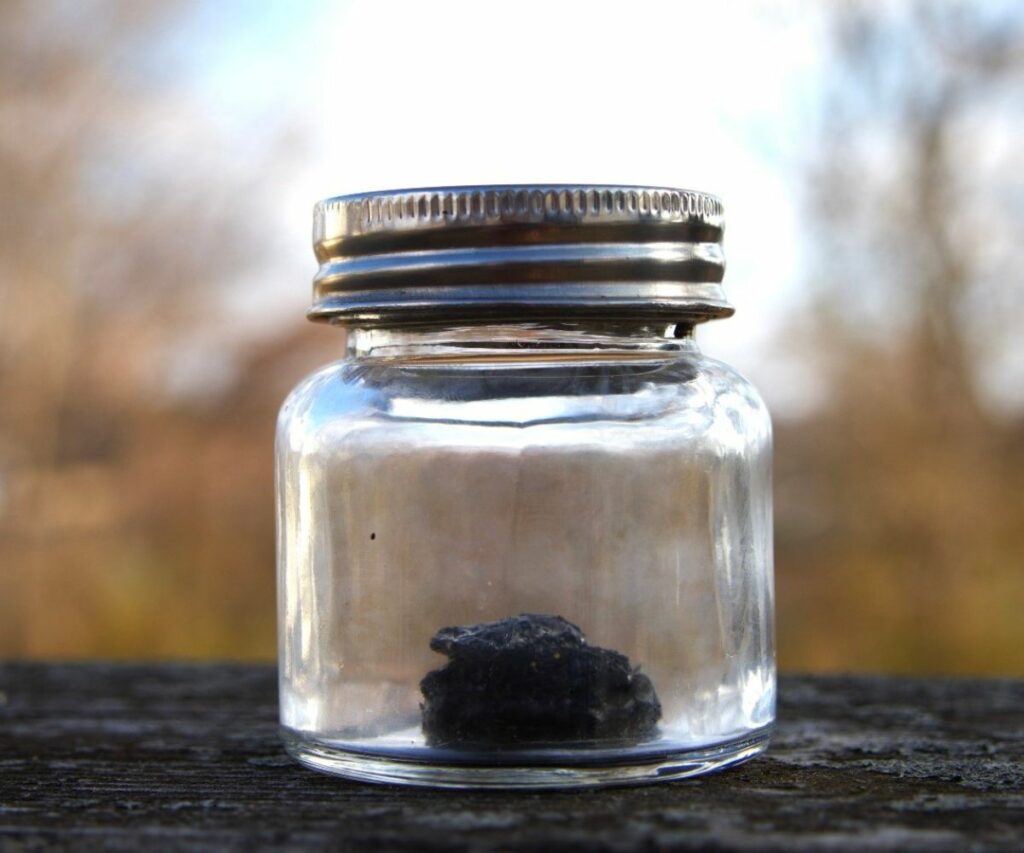
1. Source Wild Lettuce
Since wild lettuce is not usually sold in the grocery store, foraging is your best bet. You might be able to get some dried leaves online, but I would caution against this route. Wild lettuce exudes a white milky sap (called latex), where the medicine lies.
Latex production peaks during the bolting stage. When you harvest the plant yourself, you can determine the plant’s age and check for the quality and yield of the latex. When you buy dried leaves online, there’s no way to ensure you’re getting a product with actual medicine.
If wild lettuce doesn’t grow in your area, you can buy seeds online and cultivate it yourself. I grow it indoors in my medicinal garden to have wild lettuce extract year-round.
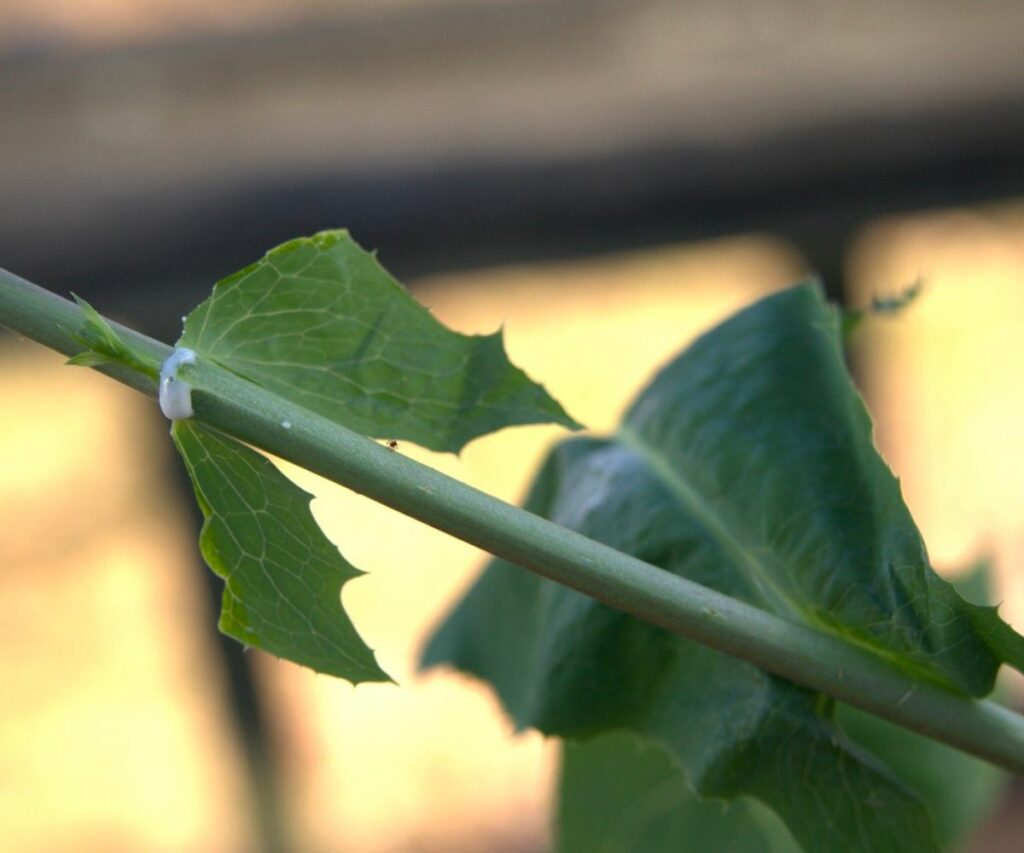
2. Harvest Plants
Harvest plants when they get close to bolting.
Keep in mind that this weedy plant can grow up to seven feet tall. Stems are tough, woody, and challenging to work with, so bring shears to chop them down and make the process more manageable.
Some people like to slice the stems and milk the stalk. Others take only the leaves. I find both of these harvesting methods to be tedious and not worth the effort.
Instead, take the entire plant, cutting it down into pieces small enough for your foraging bag. Take at least three plants to make a substantial amount of extract or as many as you can sustainably harvest.
Pro tip: You can also make a wild lettuce extract with dried plant matter. If you forage a lot in season and want to preserve the harvest for year-round use, dry the excess, store it, and extract it as needed.
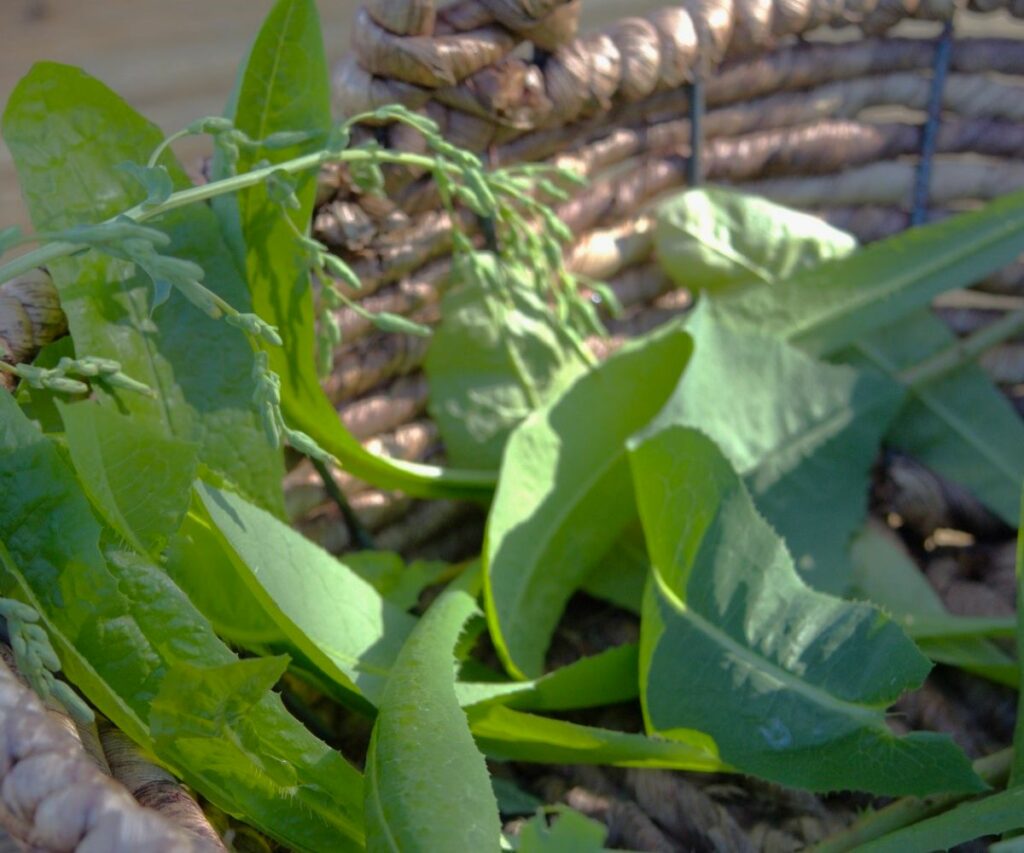
3. Blend With Alcohol
Once you get the wild lettuce back home, pop it into your blender with high-proof alcohol.
How much alcohol you use here depends on how many plants you harvest. You’ll be evaporating it off later, so exact measurements are unimportant. Use only enough liquid to make the blending process manageable and cover the lettuce completely.
What if you don’t have a blender? You can chop the wild lettuce finely and cover it with alcohol, shaking well to ensure the liquor gets in all the leafy crevices.
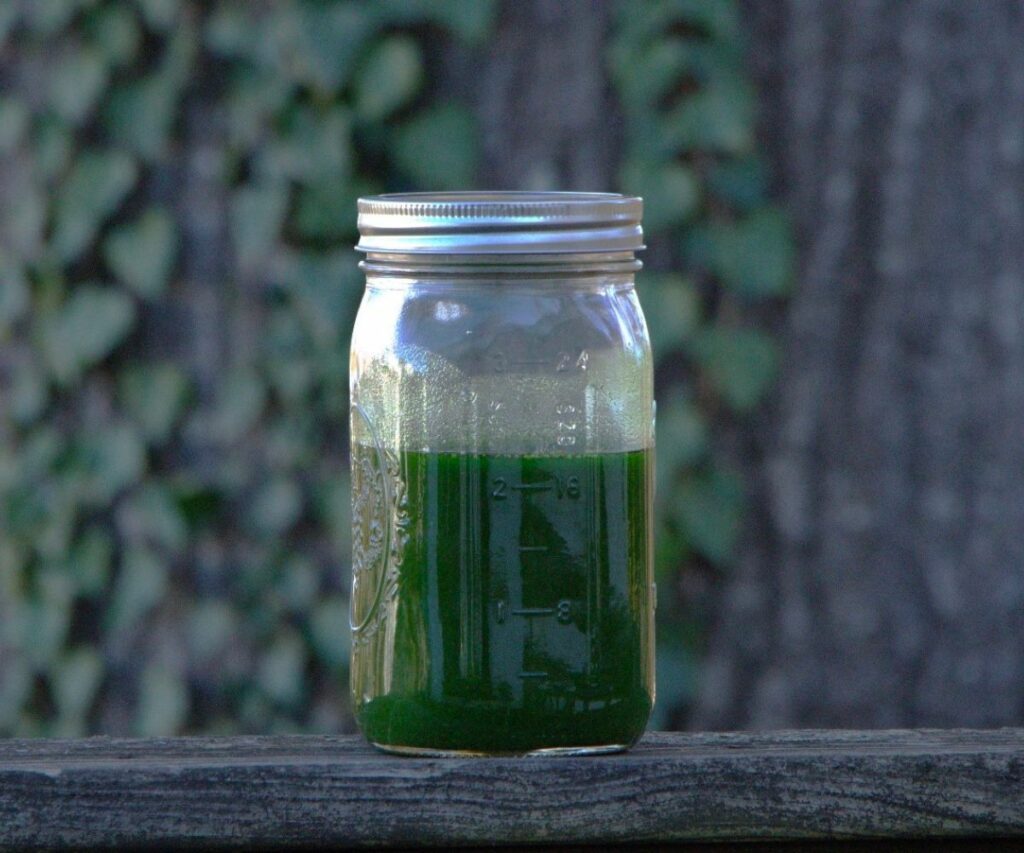
4. Leave for Extraction
Pour your blended lettuce and liquor smoothie into a mason jar and leave for extraction.
Unfortunately, beyond anecdotal evidence, there isn’t much data on how long you should leave it. In my experience, a long-term soak isn’t necessary. Paying attention to the color is more important than the timing.
Eventually, you will notice the alcohol becoming cloudy. In two or three days, it will darken to a brownish-black. At this point, it’s ready. To speed things along, shake the mixture at least once or twice a day.
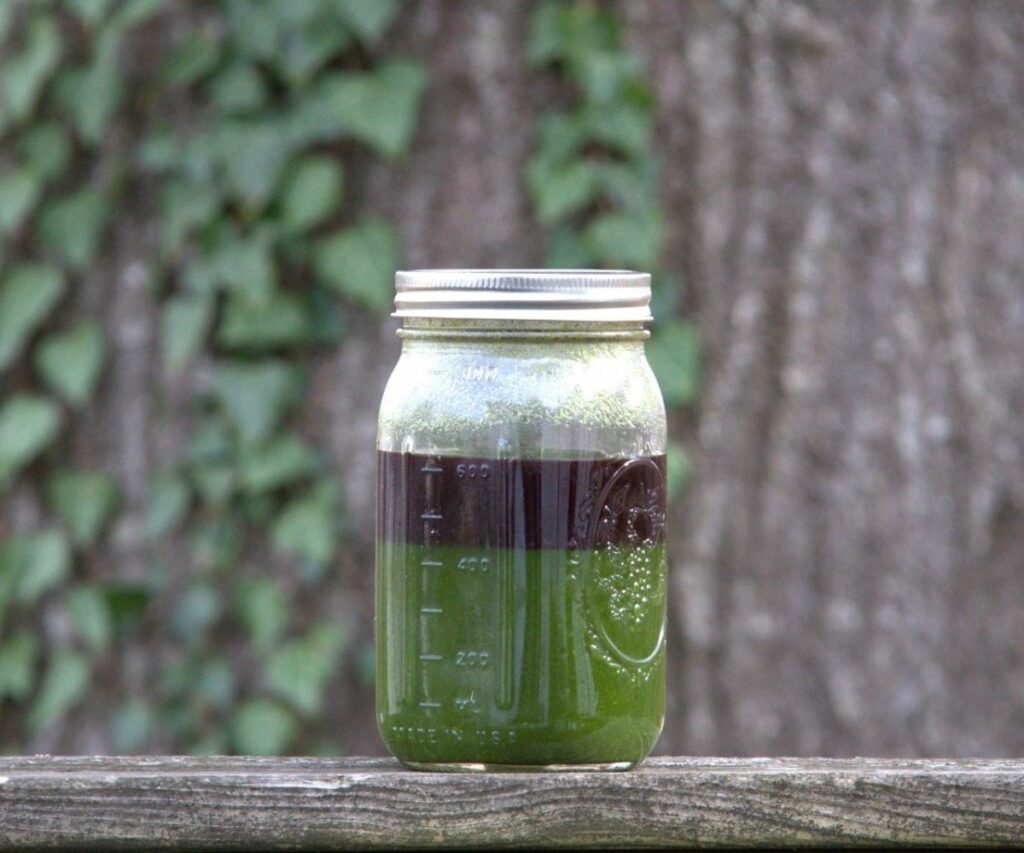
5. Add Water and Decoct
Check the level of liquid lettuce mash in your mason jar and measure out roughly the same amount of water. There’s no need to be exact; an approximation will do just fine.
Once your water is measured, pour the mash into your slow cooker and set it on the high setting.
When it gets hot and begins to bubble, turn it on the low setting and add the water. Cover with the lid to prevent evaporation and leave it to decoct for four to six hours. More time won’t necessarily hurt, but be sure to check the liquid level and keep the lettuce fully saturated the entire time.
If you don’t have a slow cooker, just use your regular stove pot. Keep the pot on a lower heat, checking it often to ensure the liquid inside does not boil.
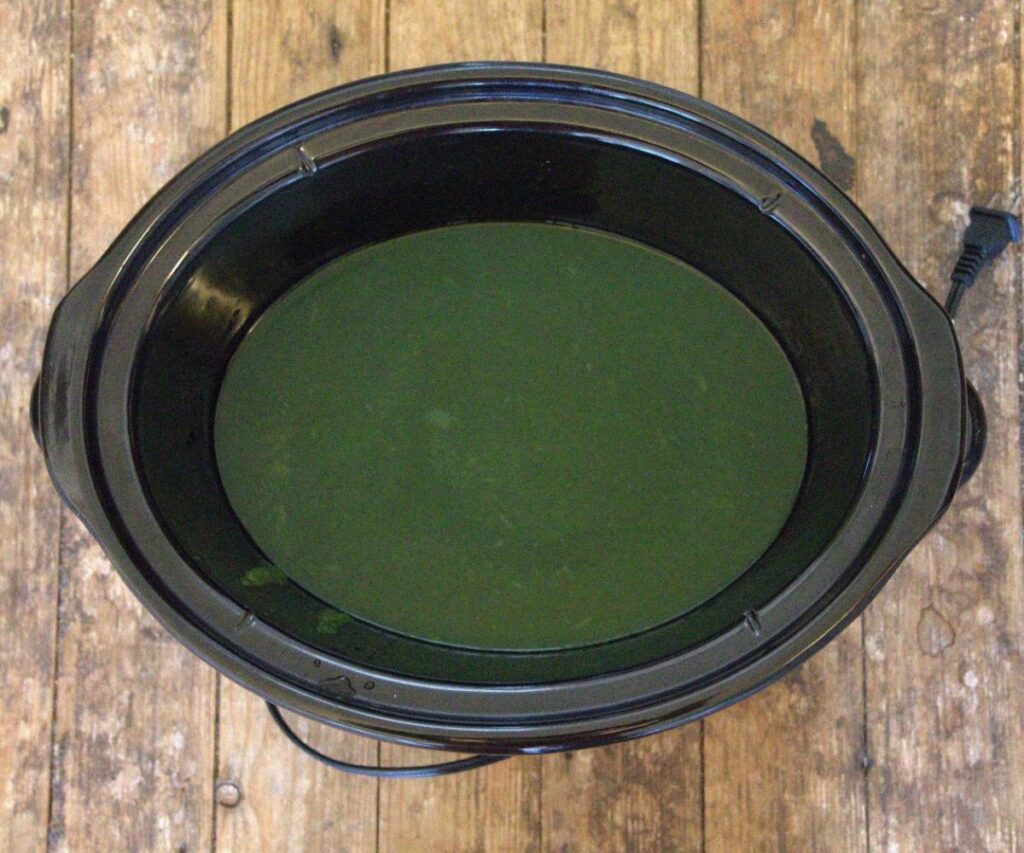
6. Strain Plant Matter
Once at least four hours have passed, strain the liquid from the plant matter.
By now, the liquid should be dark brown. You can compost whatever is left of the wild lettuce, reserving the liquid to reduce afterward.
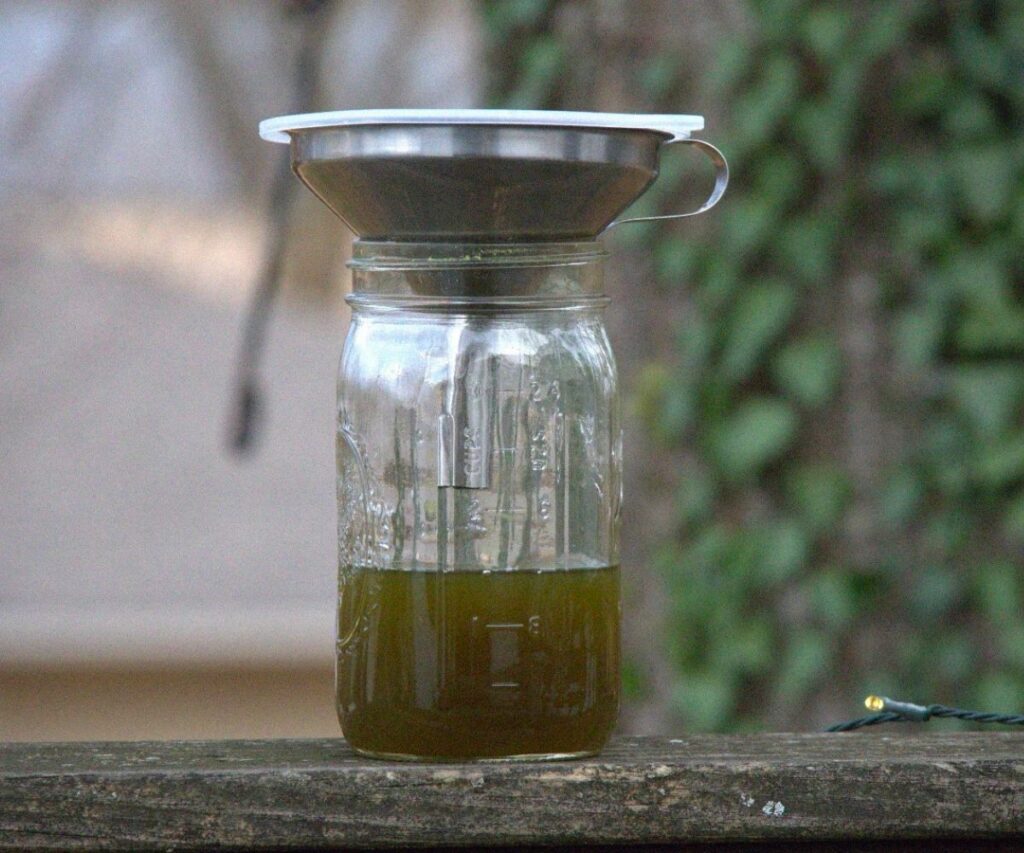
7. Reduce Decoction
Pour the strained liquid into the stove pot and set it on a low heat setting.
It should not boil, simmer, or even steam. It should evaporate as slowly as possible to protect the compounds it contains, so be patient.
Depending on how much liquid you use, it will likely take three to five hours to reduce.
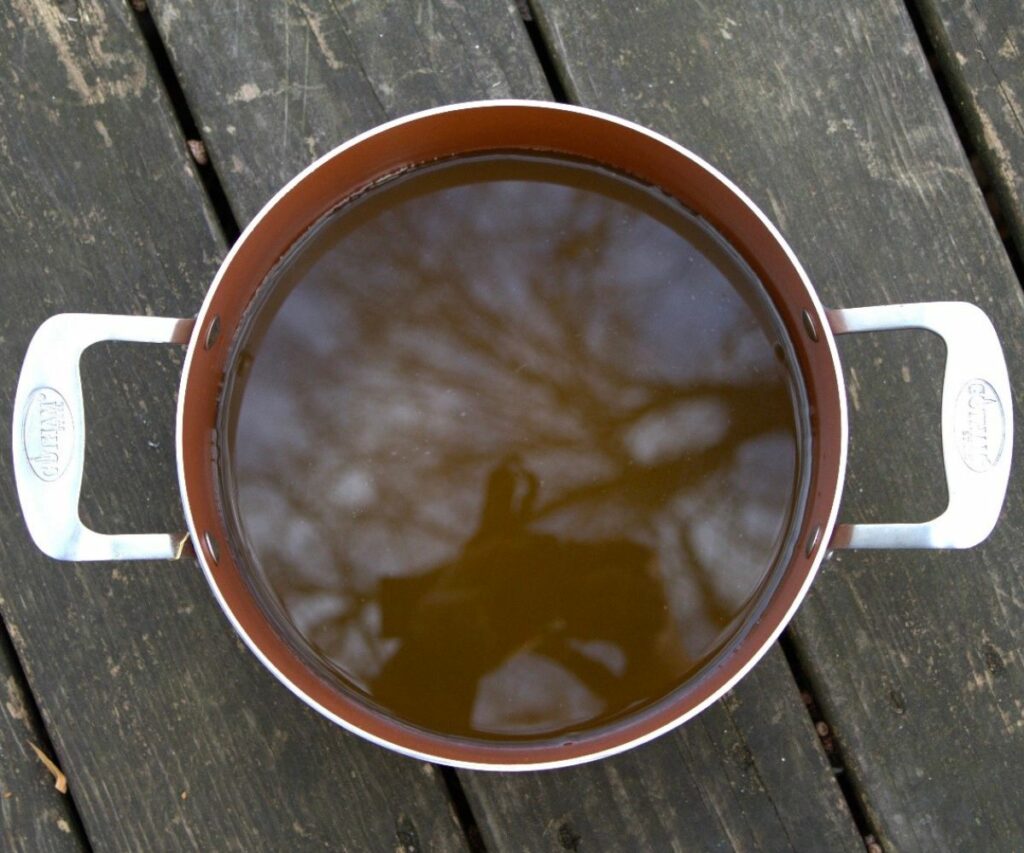
Stir the liquid often as it reduces to ensure it isn’t burning, and keep an eye on its viscosity. It will become thick and dark as the water evaporates away.
Eventually, you will be left with a gooey paste that has the same consistency as tar. At this point, remove the pot from the stove and stop the reduction.
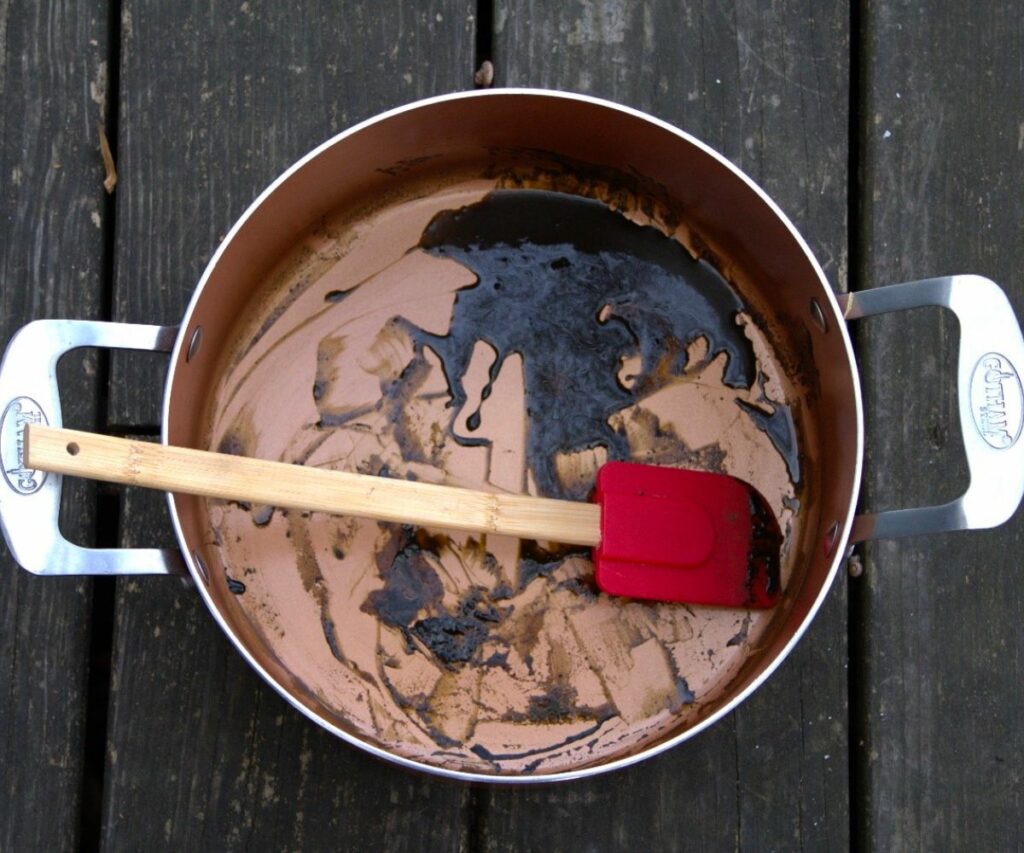
8. Dehydrate
Remove the solid silicone or plastic tray from your dehydrator and pour the reduced extract into it.
Use a spoon to spread it thinly so it will dry quickly. Replace the tray, set your dehydrator to its lowest heat setting (I use 95°F), and leave it to dehydrate for one or two hours.
The goal here is a gummy, sticky, black resin. The exact time it takes to dehydrate depends on how thoroughly you reduce it in step seven. Check it often and ensure it doesn’t dry to a crackling powder. Over-dehydrating could destroy some of the compounds.
If you do not have a dehydrator, pour the wild lettuce extract onto a plate or cookie sheet and leave it out in the sun or other dry, warm place. This method will take much longer (likely several days) but has less room for error since you won’t be applying extra heat.
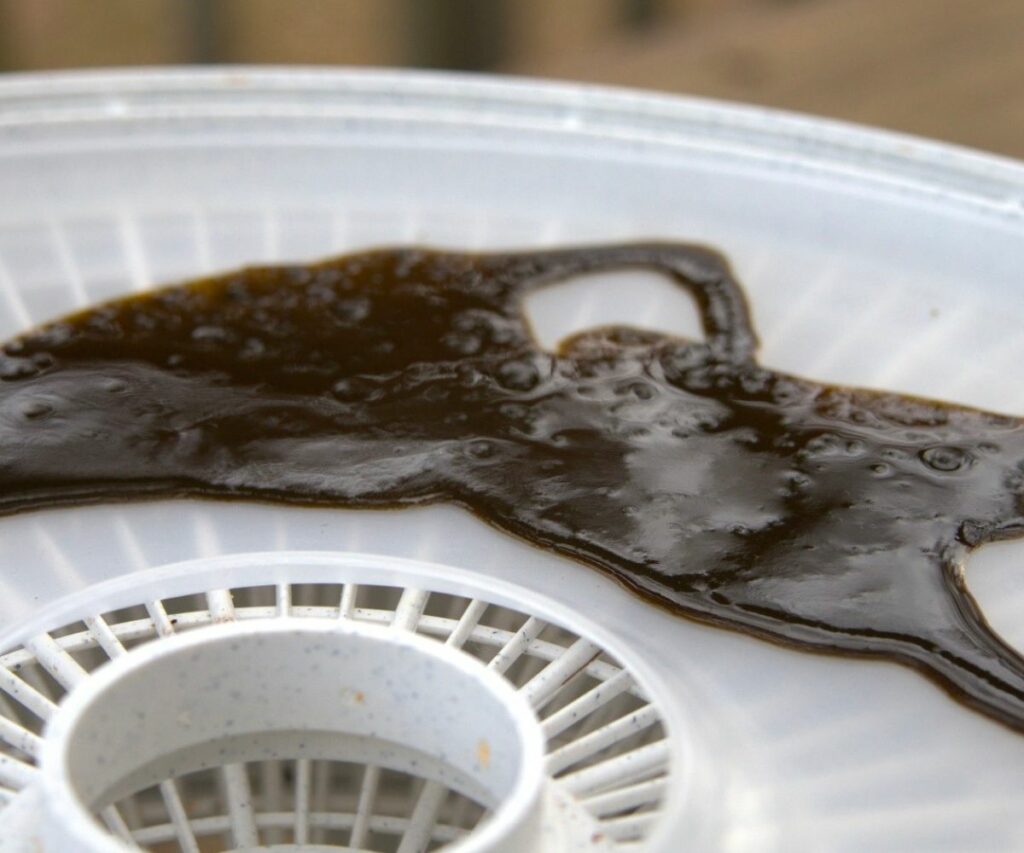
9. Store Properly and Enjoy
Scrape the tray of your dehydrator and form the resin putty into a ball. It’s completely cured and shelf-stable in this form. You can store it indefinitely in wax paper, a tin, or a small jar.
So, what about using it?
You could take it orally at this point, but remember, wild lettuce extract is bitter and exceptionally potent in its pure form. You don’t know how you’ll react, especially if it’s your first time taking it. While generally considered safe, there have been reports of toxicity and over-sedation.
Because of potential adverse effects, it’s much better to create a tincture, tea, or other medicine as needed. This will not only dilute the extract, but it will also be easier to take and taste better.
For now, the largest part of the work is done. Congratulations! You have a powerful wild lettuce extract to enjoy.
